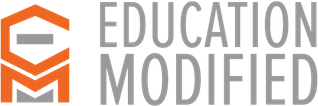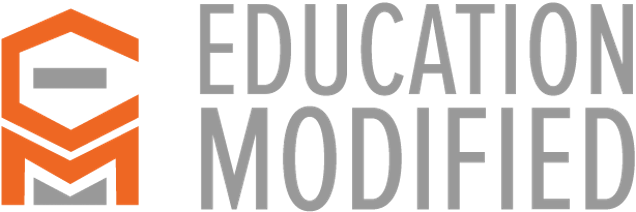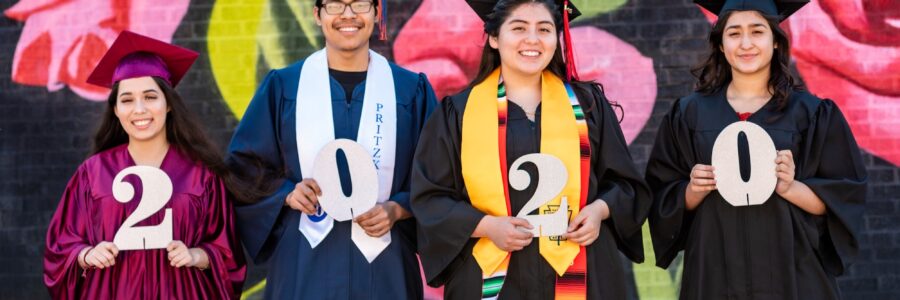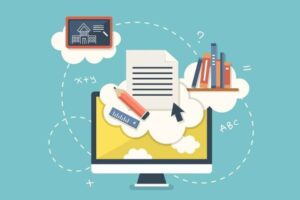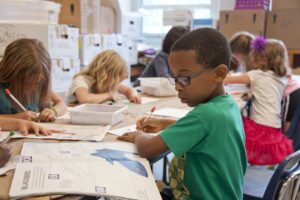2020, more than any year before, has highlighted the longstanding problems within our special education system. And in many cases, the pandemic made those problems worse. For decades, special education teams have been expected to achieve the impossible — meet every need of every student without the time, tools, or resources to do the job. This year, the pandemic exposed this flawed system for all the world to see as teachers, administrators and districts were left with little guidance or tools to provide remote support to special needs students.
But as teachers and educators have always done, they persevered and found ways to meet the need.
Our Education Modified partner schools have led the way, working harder and smarter than ever to increase transparency, communication and collaboration to better serve their special populations — those with IEPs, 504 plans, ELLs, and other education plans. Our mission at Education Modified is to move special education beyond the limiting boundaries of regulatory compliance, and provide teachers with the workflow, communication and data collection tools necessary to improve academic and functional outcomes for every student. Each day of the pandemic, we witnessed our partner schools doing just that. EdMod is currently being used to support over 25K special population students across the country.
Listening to Teachers and Schools
Since the pandemic began, the EdMod team has worked with our schools, districts and teachers to identify what they needed most urgently in the remote/hybrid world of special education. We interviewed users and principals and had check-ins with our districts to specifically ask what their unique situations were in their buildings, and understand what was happening for special populations of students and their educator teams. Then we listened. Not surprisingly, we learned that our partners, at every level, were feeling stressed, burnt out and tired. But we also learned that while there were drastic differences in what they needed given the location of their schools and the type of students they served, there were commonalities in the struggles they were facing. Here are three specific problems that can — and need to be — addressed immediately.
The Big 3
Top problems for special populations teams that have only been exacerbated by the COVID-19 pandemic include:
- Lack of communication and collaboration
- Difficulty with progress monitoring
- Lack of access to qualitative and quantitative data
Why does this matter?
Inequities for special populations of students is not new. Achievement gaps for students with IEPs, 504 plans, and those who are English Language Learners have lingered despite inclusive efforts. While more and more students are receiving services and being included in general education curricula, achievement compared to peers has not caught up. This is because the allocation of time and resources for special populations teams is still focused on administrative and compliance tasks, rather than classroom instruction, intervention and collaboration. In Nathan Levenson’s work on investment allocation in special education, (Getting the Most Bang for the Education Buck, Teachers College Press, 2020) streamlining paperwork and meetings by 20% for special ed teams adds the equivalent of 4 teachers to a district of 5000 students. Reducing administrative and compliance paperwork is a necessary step to transfer this time to improving meaningful collaboration and instruction.
Additionally, we don’t listen to practitioners. Teachers always report that what they need is more time, AND we know that strong collaboration between general and special education teachers leads to better outcomes. Yet, teachers report that they feel they have less time than ever. They also do not feel that they are any more supported or prepared to reach these populations than they were 10 or 15 years ago. In the Fall of 2019, before the pandemic, the NCLD released a report highlighting that the vast majority of teachers did not feel adequately prepared to teach students with disabilities, nor did they feel supported. This is because both general and special educators do not have access to the information or resources they need to support different types of learners.
Unfortunately, the pandemic has only increased gaps in communication, coordinated services, and individualized delivery of instruction. Special education needs to be examined, now more than ever, to finally deliver on improved workflows and access to technology for teachers, schools and districts to do the many jobs that special education requires of them. As a team at Education Modified, here is what we’ve learned:
Lack of Communication & Collaboration
Prior to the pandemic, even when most Special Ed services were being provided in person, teachers struggled to communicate with one another about the learning needs of individual students. For example, teachers often lacked common planning time for collaboration between special ed and general ed, and most communication was via email or impromptu hallway conversations. Or, they received the majority of special ed information via paper documents or files, and there was little time for explanation, or transfer of professional memory to accompany these documents. Post pandemic, this problem was only made worse as all communication and instruction went remote. Yet, we know that increased, coordinated and deliberate communication improves outcomes for students.
“We never get to talk to the 6th grade team, but we should. If we had time to regularly meet with various teams, this would save us many hours throughout the year, but there just isn’t an easy way of doing so.” – Middle School Special Ed Coordinator, CO
In response, EdMod built a real-time teacher chat feature called the Team Board that enables teachers to post quick updates, organize messages about specific students, notify teams and receive input from colleagues. Given the amount of professional knowledge and qualitative data that needs to be communicated for special populations, this research-based feature has enabled teams to collaborate effectively, regardless of remote or hybrid settings. Since Labor Day 2020, our teachers have begun using our new Team Board to send nearly 4,000 messages to their team members about the learning needs of specific students.
“When we had our first grade level team meetings and used the Team Board to capture our notes, it changed everything. It is now an evolving, real-time record that we can use and keep referring to over time.” – Special Ed District Coordinator, WA
Difficulty with Progress Monitoring
Before the pandemic, teachers used a wide array of classroom-based measurements, assessment tools and data collection tools to document and monitor their students’ progress on their IEP goals. When special ed directors ask the question of “How are you measuring a student’s progress towards their IEP goals?’ they often felt unsatisfied with the ability of their teachers to provide data-driven answers. And whenever we ask them, most special education directors say that the teachers in their building “all do it their own way”, and there is a variety of spreadsheets and documents “they’ve built on their own”. And this is because it was difficult before- there is no cohesive system, even within IEP compliance technology, to easily track progress and share evidence of growth towards goals. Since COVID-19, teachers have now had to find and assess their own progress monitoring tools, reinvent more systems to collect and keep data all in one place, and create their own graphs to evaluate progress. On top of all of the other challenges COVID-19 has presented, our team has been working alongside schools and teachers to help solve this problem.
“Our Learning Coaches LOVE the EdMod Goals feature. We are all about data so building smart goals and being able to track their progress has been a HUGE PLUS.” – Director of Professional Learning, Private School, UT
In Education Modified, 35,000+ goals have been uploaded, so teachers can easily share, track and monitor their students progress towards these goals, all in one place. Every teacher and team member has access to which goals a student is working on, as well as what is being used to assess that goal, evidence and student work, and automatic data visualization of progress over time.
Access to qualitative and quantitative data
The student information that is traditionally tracked and shared for general education students consists of mostly quantitative data — grades, attendance, test scores, etc. But for special populations of students, qualitative data is often more impactful, and legally mandated to be accessible and understood by all teachers.
Information such as diagnosis, accommodations, services, classroom strategies, and modifications, must be communicated- on top of all of the quantitative data shared for every student. While many special educators self-report that they look at IEPs on a weekly or monthly basis, surveys indicate that general ed teachers do so much less frequently. And there is very little data available to administrators for them to know if teachers have looked at, let alone understood or digested, a student’s IEP.
“General educators only have access to our IEPs-at-a-Glance, which we have to create and share every year, and it’s not that meaningful to them. We have no idea how often they actually even look at it.” – Special Education Director, PA
Education Modified automatically pulls key qualitative and quantitative data from IEPs, 504 plans, ELL plans, behavior plans and custom learning plans to put the data into easily accessible dashboards — called a Learning Biography — providing teachers an accurate, up-to-date reference guide for every student. In most schools, this critical, job-essential data is trapped in antiquated IEP software systems that most staff members can’t access.
In EdMod, teachers viewed Learning Biographies over 440,000 times in 2020.
“Our ICT teachers are more prepared, can do their paperwork in half the time, and our general educators are informed.” – Director of Inclusion, NYC Charter School.
Education Modified also provides teachers with instant access to curated, research-based content, strategies, and tools to support differentiated instruction. Our database includes hundreds of research-based supports, classroom strategies, tools and activities for all skill gaps and learning needs diagnoses, available at teachers’ fingertips.

Since Labor Day 2020, nearly 10,000 research-based strategies have been tagged to students with learning needs in EdMod. This information is organized for each student by skill gap, allows teachers to rate strategy effectiveness, share notes with colleagues, and pass along this professional memory from year to year, moving with the student. That way the 4th grade team can start the year with knowledge and expertise provided directly from the 3rd grade team, instead of starting from scratch.
What else needs to be done as we enter 2021?
While we are encouraged by our school and district partners, and the work they have done to overcome the most challenging times our K12 system has ever seen, there is more to be done. We hope to see a shift in focus in a few areas:
First, we need to listen to practitioners. Again, this is not a new thought- but really, we need to start. Teachers and building leaders need to be included in conversations at every level, and asked for their input at every stage as the pandemic continues.
Second, families need to be included as well; parents are a critical part of their student’s IEP team. We need to listen to families of students with disabilities to understand what they need to participate meaningfully, and foster a collaborative climate where schools & families can work together. Districts need guidance and tools to strengthen relationships with parents. Especially now, given all that families have had to endure because of school closures, virtual instruction and lack of services, everyone must be on the same team. Providing tools for districts to communicate with parents and create transparency is a necessary step- so that what is happening in schools is easily understood by parents and allows for meaningful and effective family participation.
Lastly, a focus on innovation, research-based solutions and best practices that we already know work, must be prioritized. We need local and state systems, most likely driven by cooperatives, to apply what we’ve learned from research to scale at every school. Systems like progress monitoring, which currently consist of “teachers all figure it out their own way” have to end. Districts need autonomy, and funding, to adopt best practices working in other areas, think outside the box for how they approach problems in special education, and continue to innovate. A reallocation of time and resources – “what has always been done”- must be considered to create more efficient workflows, apply what we know already works, and provide the opportunity to test new and improved technologies to do work more efficiently. A mindset shift of focusing time and energy on instruction and outcomes, not compliance, needs to be prioritized. Status quo systems that were not closing achievement gaps before the pandemic are no longer acceptable. If 2020 taught us anything, it is that we need to try something new to support our most vulnerable students in the post-pandemic world.
Helping special education teams to work smarter, not harder, is what will get our schools and families through the tail end of the pandemic. This includes investing in research-based technology solutions and putting sustainable, best-practice systems in place that can be managed regardless if students or teachers are in person or remote. Education Modified is funded by the Institute for Education Sciences through an SBIR Phase II research grant that allows our team to take direct feedback from teachers, coordinators, and administrators, and ensure that it translates to technology solutions that meet their needs, supported by research.
Our team looks forward to continuing to listen and learn alongside our partner schools, and we are looking upwards and onwards to this new year- and this unfortunate circumstance- as an opportunity to take what we’ve learned and apply it in order to elevate special education practices.
